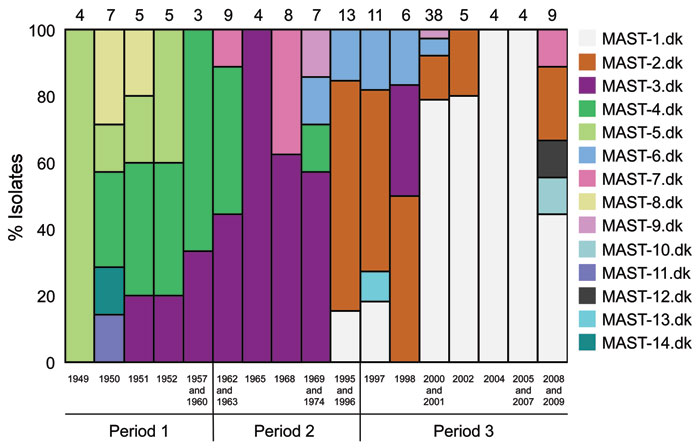Volume 18, Number 5—May 2012
Research
Temporal Trends in Bordetella pertussis Populations, Denmark, 1949–2010
Figure 4

Figure 4. . . Temporal trends in the frequency of multilocus sequence type types (MASTdk) of Bordetella pertussis isolates collected in Denmark, 1949–2010. Years with 1 or 2 isolates are combined with another year in the same time period, as indicated. The number of isolates analyzed each year/years is given above each column.
Page created: April 12, 2012
Page updated: April 12, 2012
Page reviewed: April 12, 2012
The conclusions, findings, and opinions expressed by authors contributing to this journal do not necessarily reflect the official position of the U.S. Department of Health and Human Services, the Public Health Service, the Centers for Disease Control and Prevention, or the authors' affiliated institutions. Use of trade names is for identification only and does not imply endorsement by any of the groups named above.